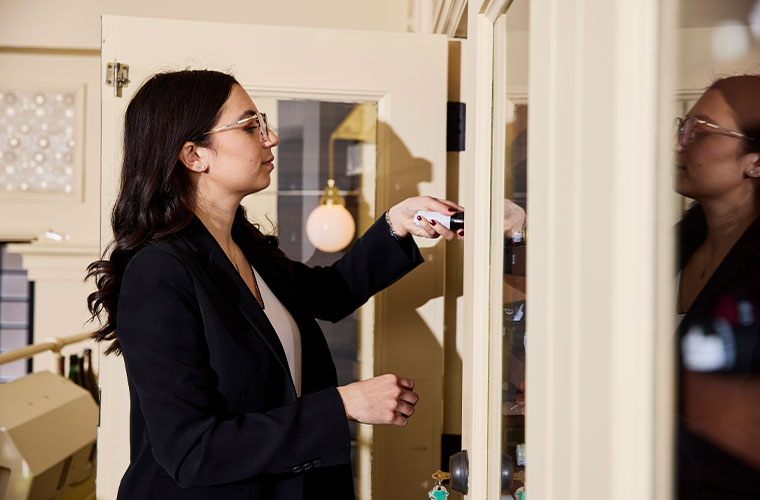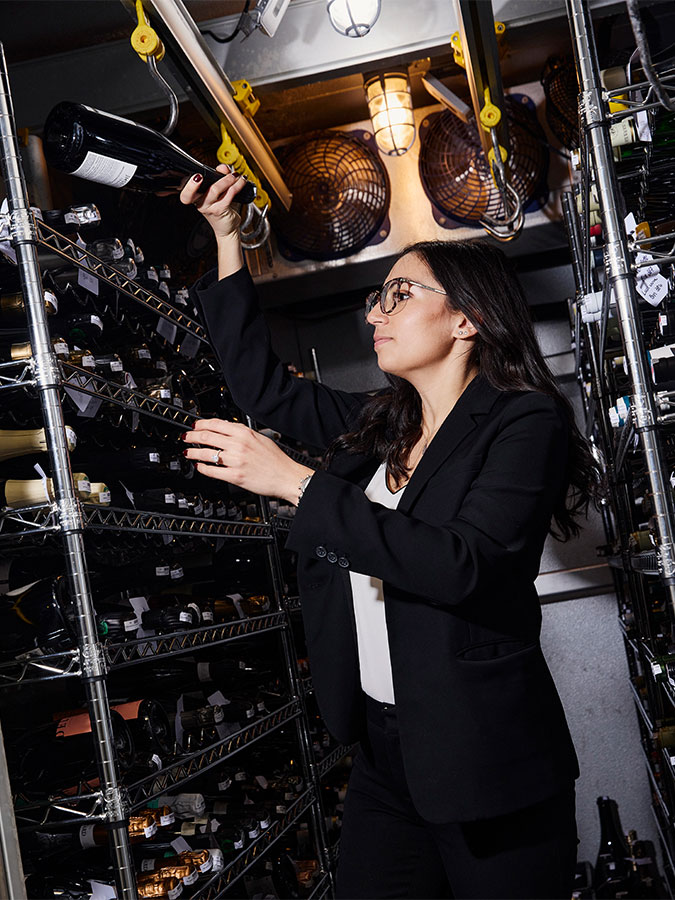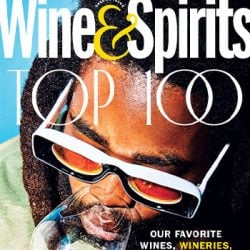

These days, we’re learning what it feels like to live in a world where fewer restaurant wine programs are piloted by serious professionals. Even as restaurant scenes rebound in many cities, the change has been palpable. First, the incidents might seem isolated: this list seems smaller than it used to be; no one on the staff can tell me about this wine. But after a while, it dawns on us that we’re witnessing a trend.
Arguably, the most profound revelation of the pandemic was a newfound awareness of the fragility of almost everything we take for granted, from toilet paper to restaurants. The former came back as it was, but the restaurant economy took a big hit with many closures. To remain open, if lean, many restaurants jettisoned sommeliers and wine collections. Of course, even before the pandemic, the sommelier firmament experienced some fracturing. The Court of Master Sommeliers, the country’s premier education and training organization for wine professions, was hit by a series of scandals that dented its credibility and appeal to some would-be members. Concurrently, the phenomenon of natural wine created dissonance and confusion among consumers and the industry alike, splintering consensus on what constituted “good wine.” Such problems perhaps accompany unprecedented success, which the sommelier profession had been enjoying for twenty years.
Then the pandemic struck. During it, many sommeliers pivoted to other work. Now, post-pandemic, they’re not returning to the floor. Instead, they’re launching retail stores, finding jobs with distributors or as consultants, or leaving wine altogether.
Their departure has had another unforeseen effect: the loss of continuity has created a knowledge gap and a fracturing of some of the basic technique and ethos that compose good wine service. Talk about fragility—it’s difficult to conceive that a two-year gap in standard restaurant operations could open a chasm into which a generation or two of professional knowledge could slip, but in some places that is, indeed, the case. With no one to properly train, mentor and model, the art of the sommelier, fashioned and refined in the U.S. over the last two generations, is slipping. According to Silicon Valley Bank’s 2024 State of the Wine Industry report, the percentage of winery sales to restaurants are sharply down (20 percent) from the previous decade’s highs, perhaps reflecting a lack of sommeliers, but also likely representative of the pains of inflation, economic uncertainty (despite what purports to be a healthy economy), and heightened competition from other beverage sectors.
Recently, Eric Asimov in The New York Times fatalistically proclaimed this moment “The Twilight of the American Sommelier.” We shall see whether this is a twilight. While there may be fewer dedicated jobs for sommeliers, new, young sommeliers are still being minted. Someone must rush in to fill this particular void.


Here at Wine & Spirits, we’ve been asking ourselves, what will the new sommelier landscape look like? Who are the young people entering the industry? What are their ideas and beliefs, and what is the reality they’re experiencing? To answer these questions, we’ve decided to start this series, in which I will identify talented, newly minted sommeliers across the country and check in on them over time, following their careers to get an idea of what the contemporary sommelier landscape looks like and how it may evolve. Our only criteria are that they be either under 28 years old or in the job fewer than two years (arbitrary, for sure, but cut-offs that might reasonably delineate youth and experience in this business). They will all be working in the wine program at a restaurant, and be recognized by their peers as gifted talents with ambitions in the world of wine.
It will be interesting to see where the search takes us. The first person I found was Hanna Krilov, a sommelier at New York’s Koloman, an Austrian-inspired restaurant in Manhattan that opened in the fall of 2022. Her story is not so different from those of inspired young sommeliers of eras past.
Hanna graduated from the Culinary Institute of America with a degree in pastry. But, as sometimes happens at the CIA, the mandatory wine course captured her imagination, providing an intellectual stimulation she felt she was missing on the culinary side. She found studying wine regions, memorizing terminology and tasting wines so compelling that she decided to go to California for a wine-intensive CIA course in the summer of 2018 where she fell even deeper into wine, using her free time to visit as many wineries as she could. Napa became her first love.
“I don’t want to spend my free time memorizing information about a region that doesn’t move me.” —Hannah Krilov, a sommelier at New York’s Koloman
Burgundy would soon supplant it, however, as the first and best front-of-house job she could find upon her return to New York and after graduation was at Bâtard, a mecca of Burgundy wine that has since closed. Smitten with Burgundy, Krilov’s attitude began to change. She had likely been on a path to try to achieve her Master Sommelier degree but realized that she just didn’t care about all wine regions. “I think it’s amazing that we have wine all over the world,” she says. “But there are some that I don’t love the taste of, or I’m not as interested in the culture or the history. And so I don’t want to spend my free time memorizing information about a region that doesn’t move me.”
The pandemic will forever mark Krilov’s early career. She thrived over the course of a year at Bâtard under the tutelage of Jason Jacobeit, making her first trip to Burgundy just before the world shutdown and the restaurant closed. During the closure, Krilov bounced between her sister’s apartment in New York and her parents’ home in New Jersey until she got the call to help reopen Bâtard, the first of two times it would temporarily close and reopen. Each time, it was a diminished experience for her: The people changed (a GM she was close to left the city), and the wine culture was different. Eventually, chef Markus Glocker left, and Krilov did too. She went to work at Farra, a wine bar connected to two-Michelin-starred Atera, where she would stay until August of 2022, when Glocker recruited her to help open Koloman.


Krilov currently works four to five nights a week on the floor at Koloman, often as the only sommelier. She’s greatly enjoyed working under Katja Scharnagl, not least because “it’s just different—and rewarding—working under a woman,” she says.
“The wine world is male-driven, and so is the restaurant world. There are not as many opportunities to work under strong women, especially when you yourself have been looking up to them from the outside. Men have a different way of managing and understanding each other. All the time, customers asking for a sommelier still say, “Can you send him over?” Or when I ask if I can help them with the wine list people still are surprised and ask, “Oh, are you the somm? A female somm?” as if someone else would be coming to the table. So it’s just nice to have a woman you can go to with a shared experience. I don’t think my male counterparts always know that aspect of what we occasionally go through in a restaurant.”
While the restaurant is busy, dinner hours feel more contracted than before the pandemic. “Those early hours are less busy, and people tend not to stay as late. And they don’t drink as much at lunch,” she reports. Weekends are dominated by cocktail drinkers, as more of the serious wine is consumed during quieter weekdays. She’s taken a shine to Austrian wine—she likes grüner veltliner, but feels especially beckoned by riesling; and Austrian reds are a whole new world to her—though Koloman’s list features plenty of Burgundy and Champagne, her original loves.
In future issues, we will check back with Krilov to learn more about the trajectory of her career, sommelier or not. In the meantime, we’ll hear from other young sommeliers at the dawn of their careers.
Jordan Mackay’s writing on wine, spirits and food has appeared in the New York Times, Los Angeles Times, San Francisco Chronicle, Decanter, the Art of Eating and many other publications. While Secrets of the Sommeliers, the book he wrote with Rajat Parr, won a James Beard Award in 2011, it’s certain winemakers that he credits with some of his most important tasting lessons.
This story appears in the print issue of Spring 2024.
Like what you read? Subscribe today.



















